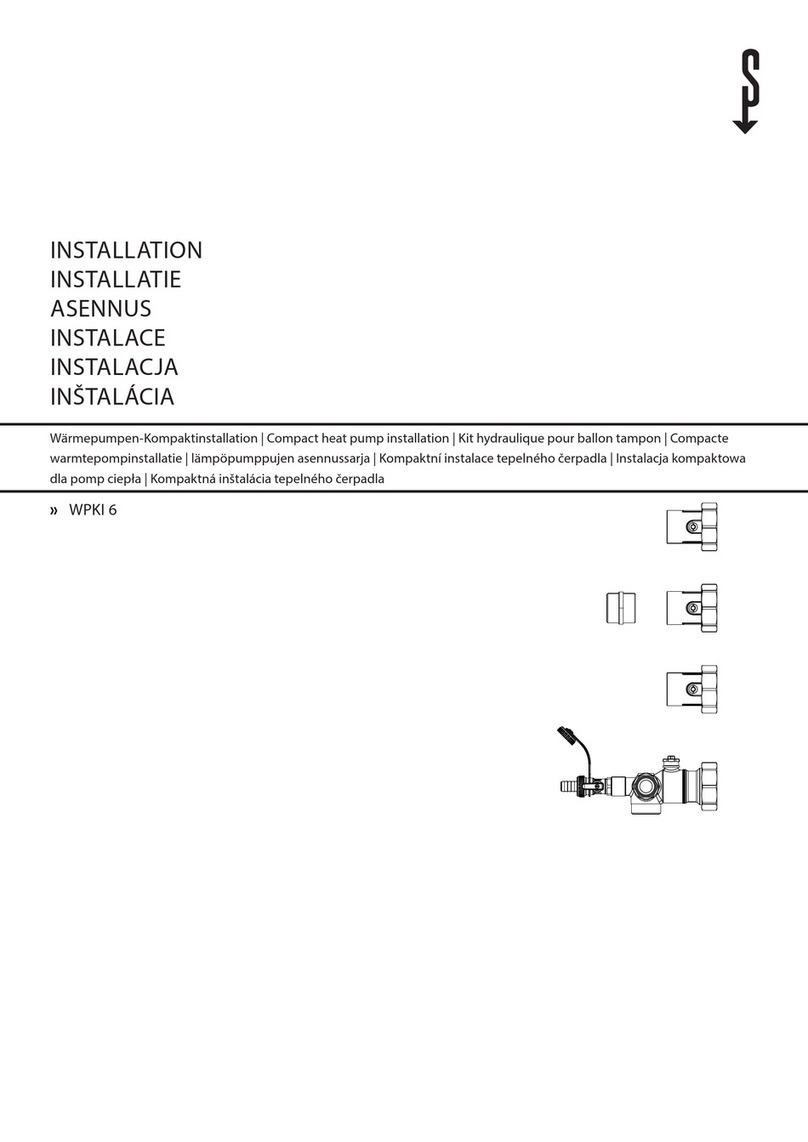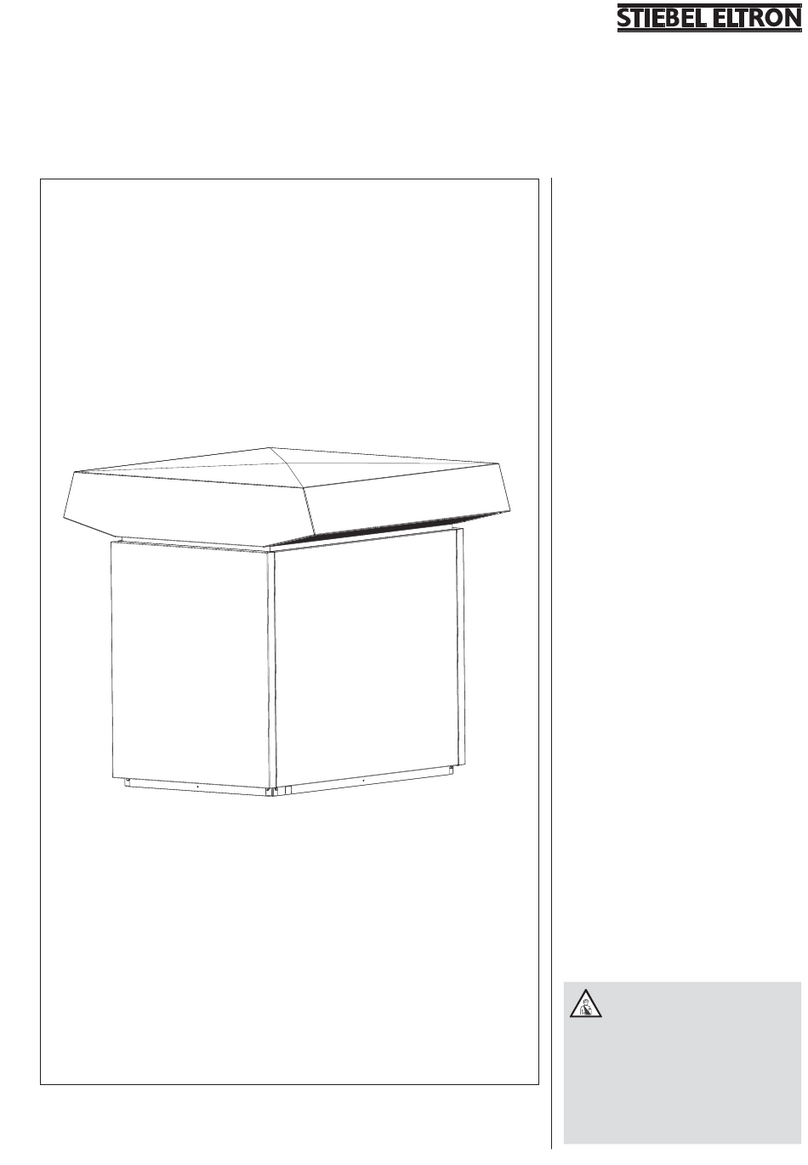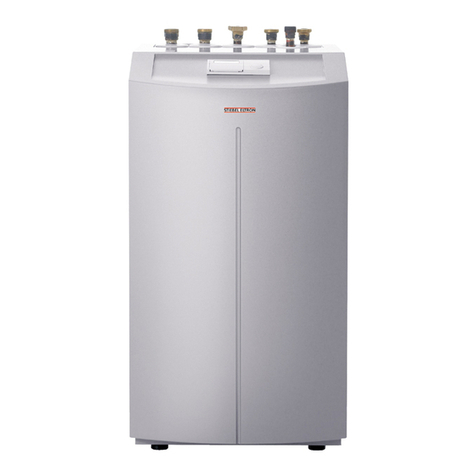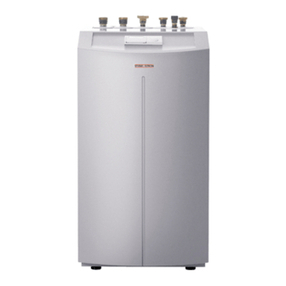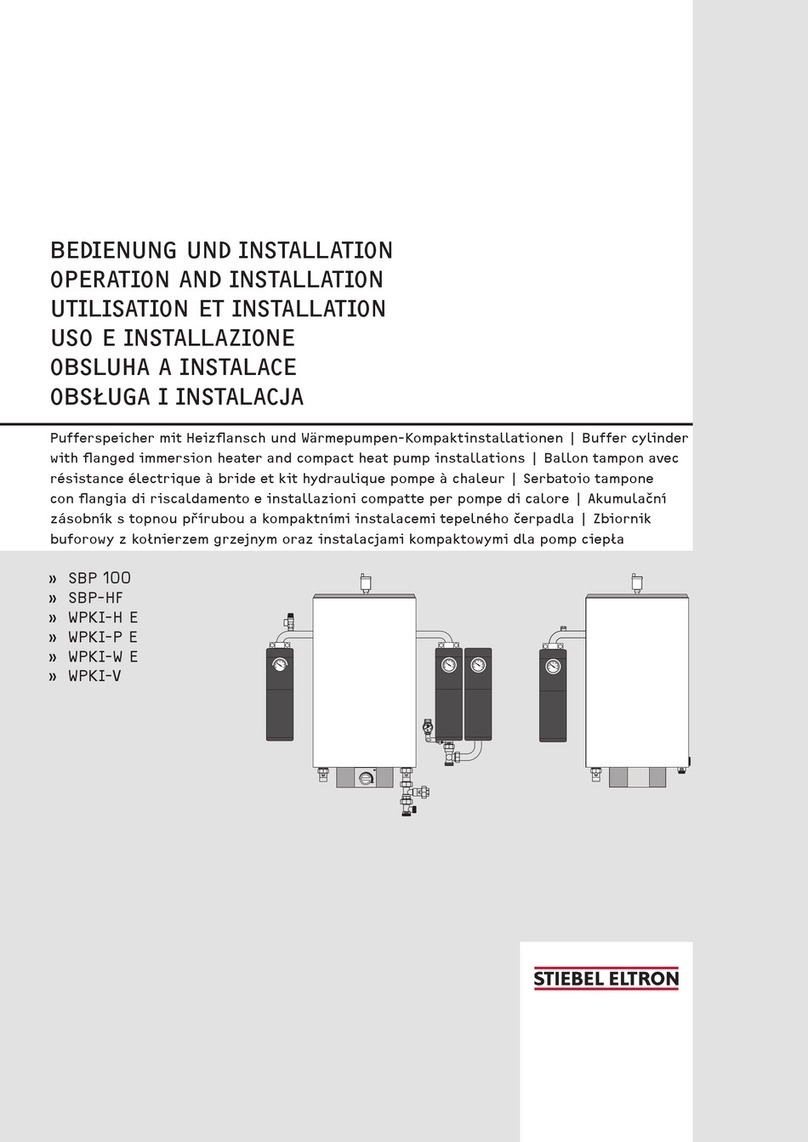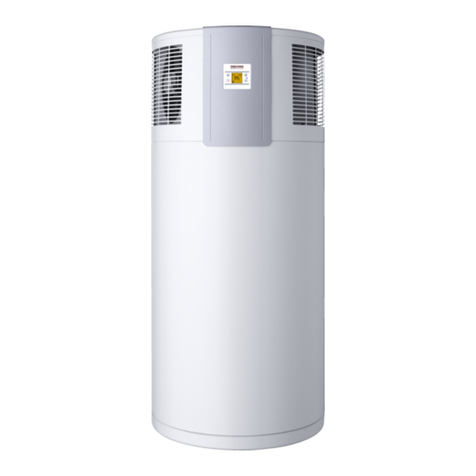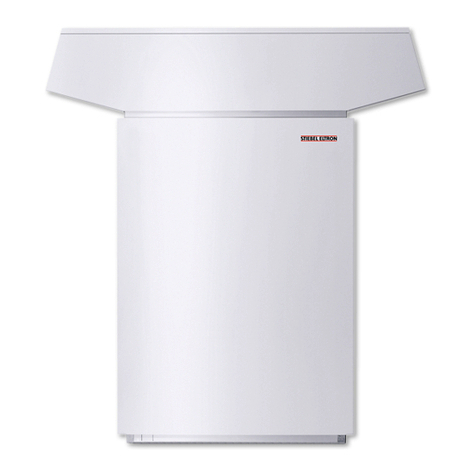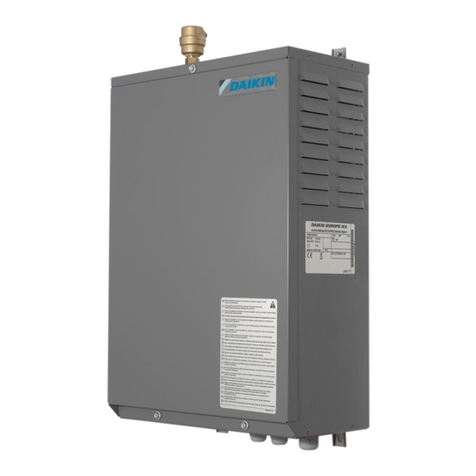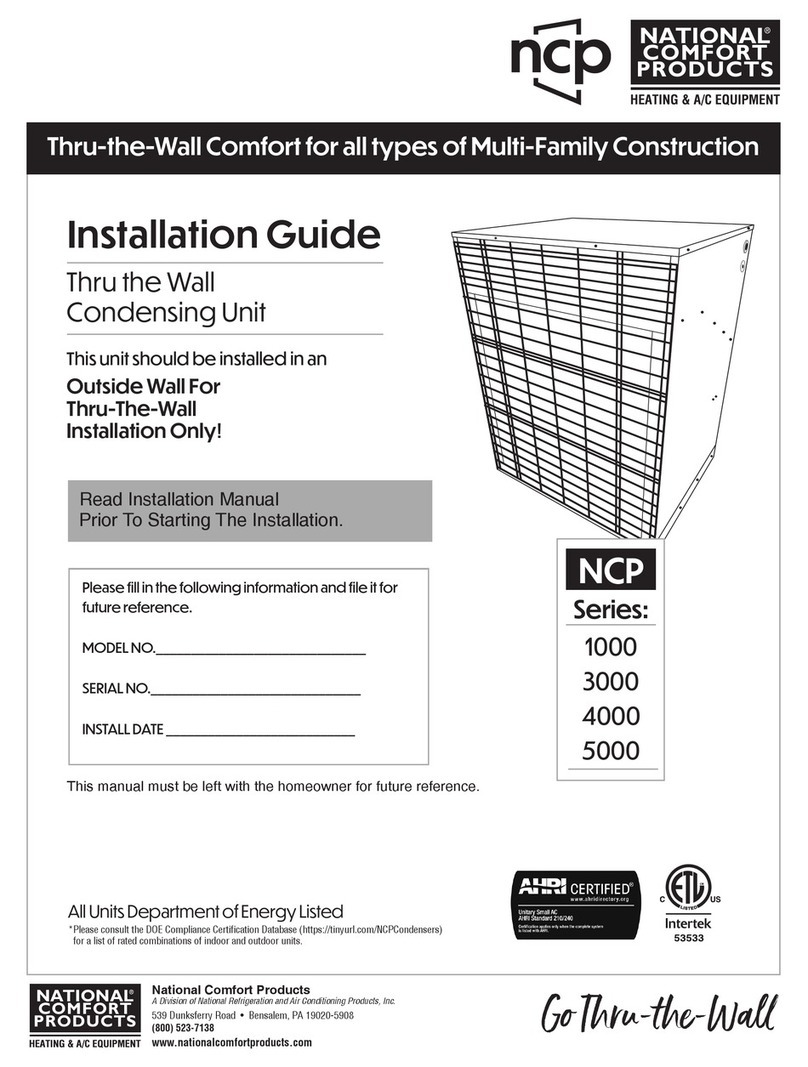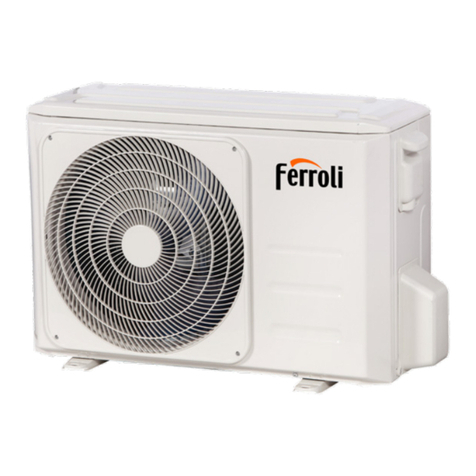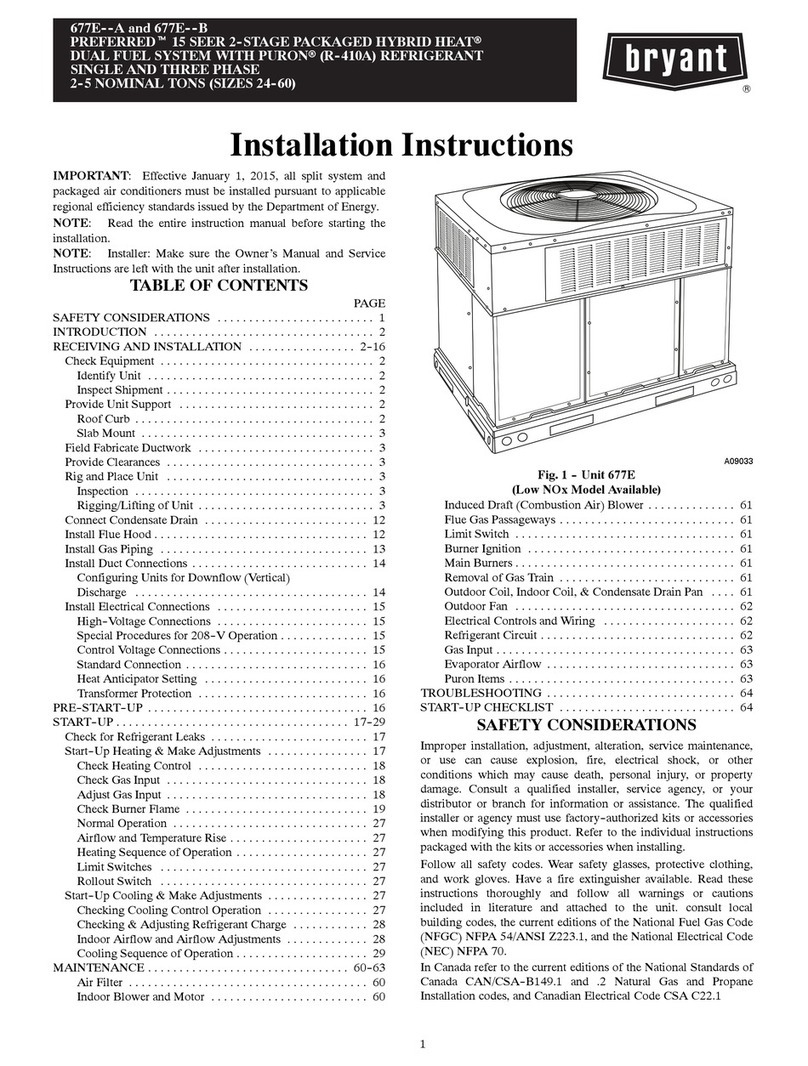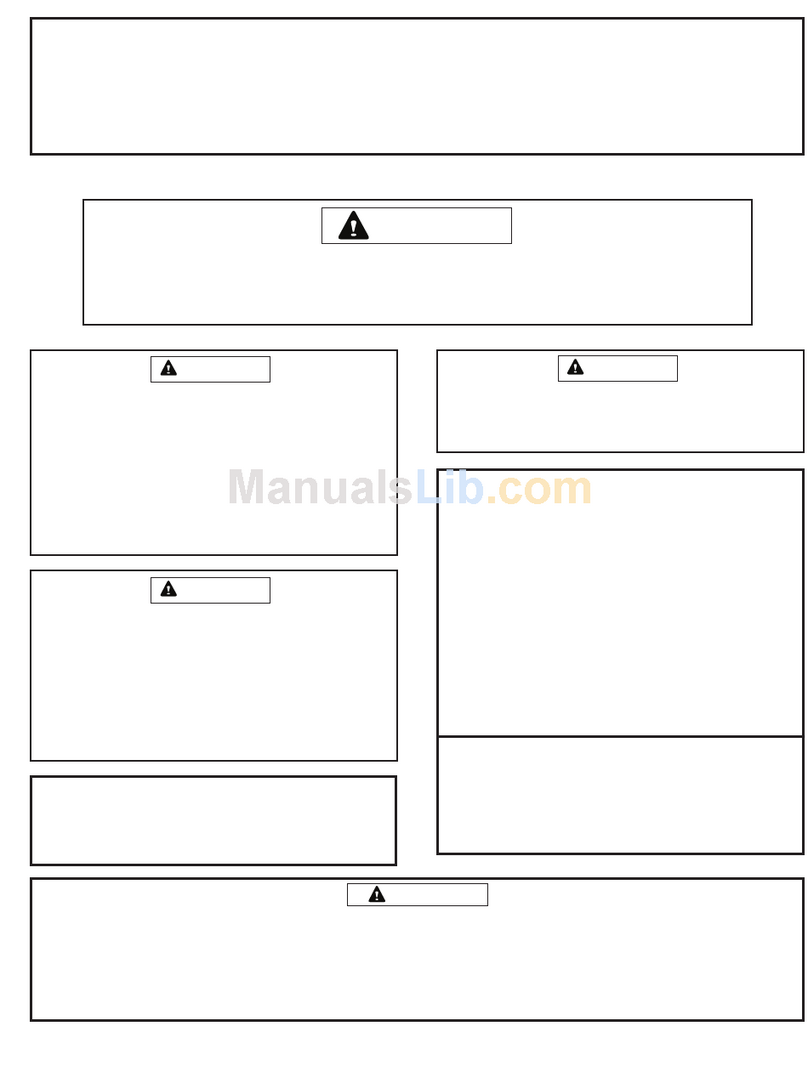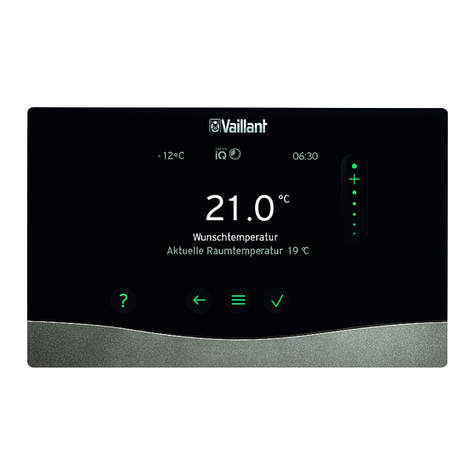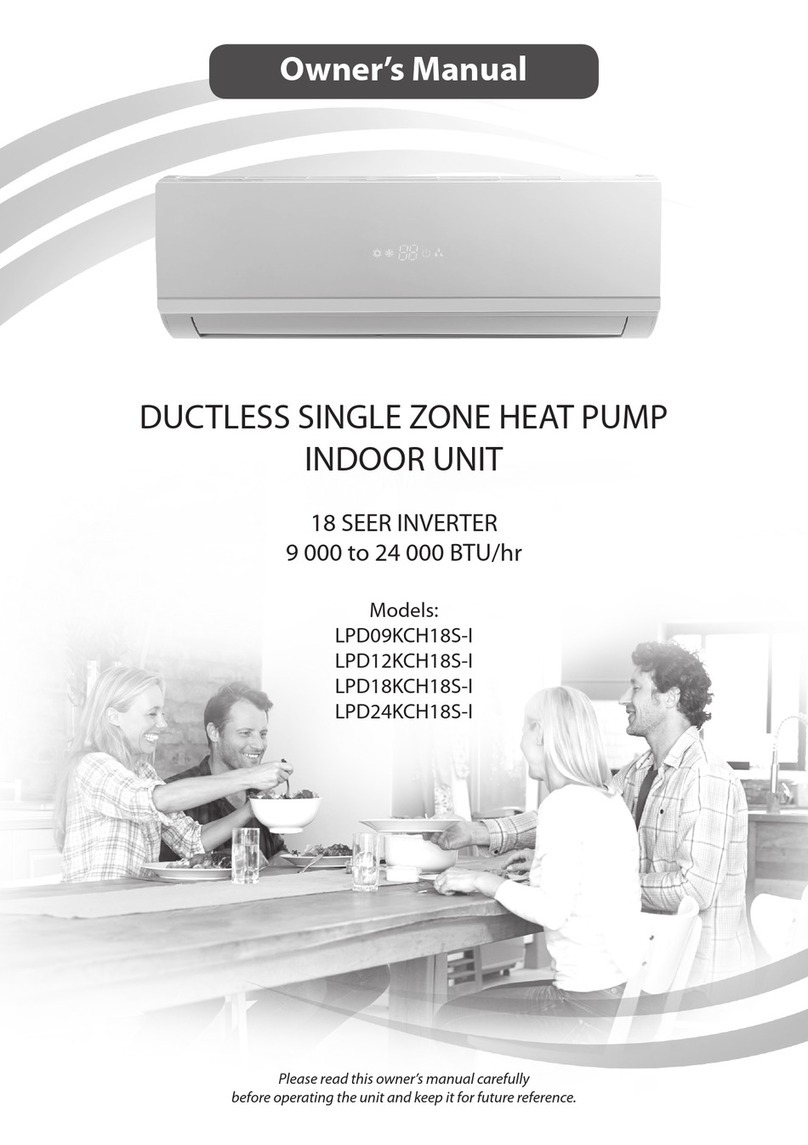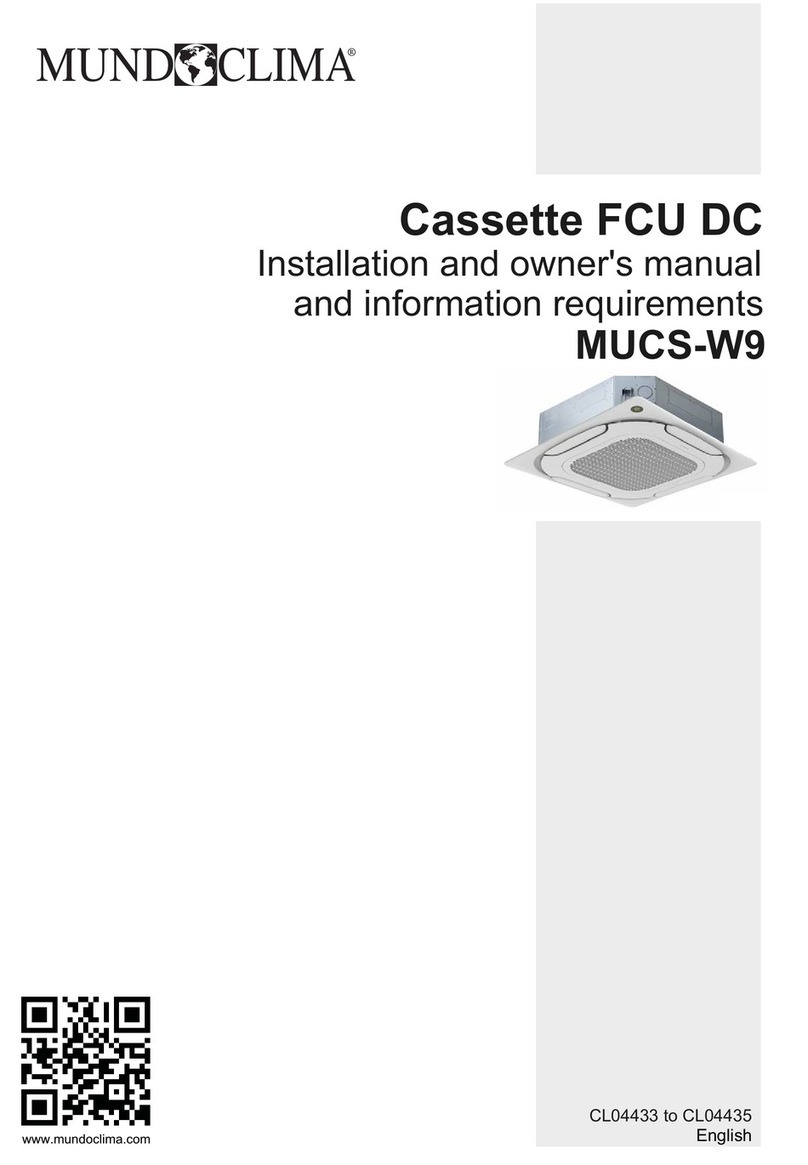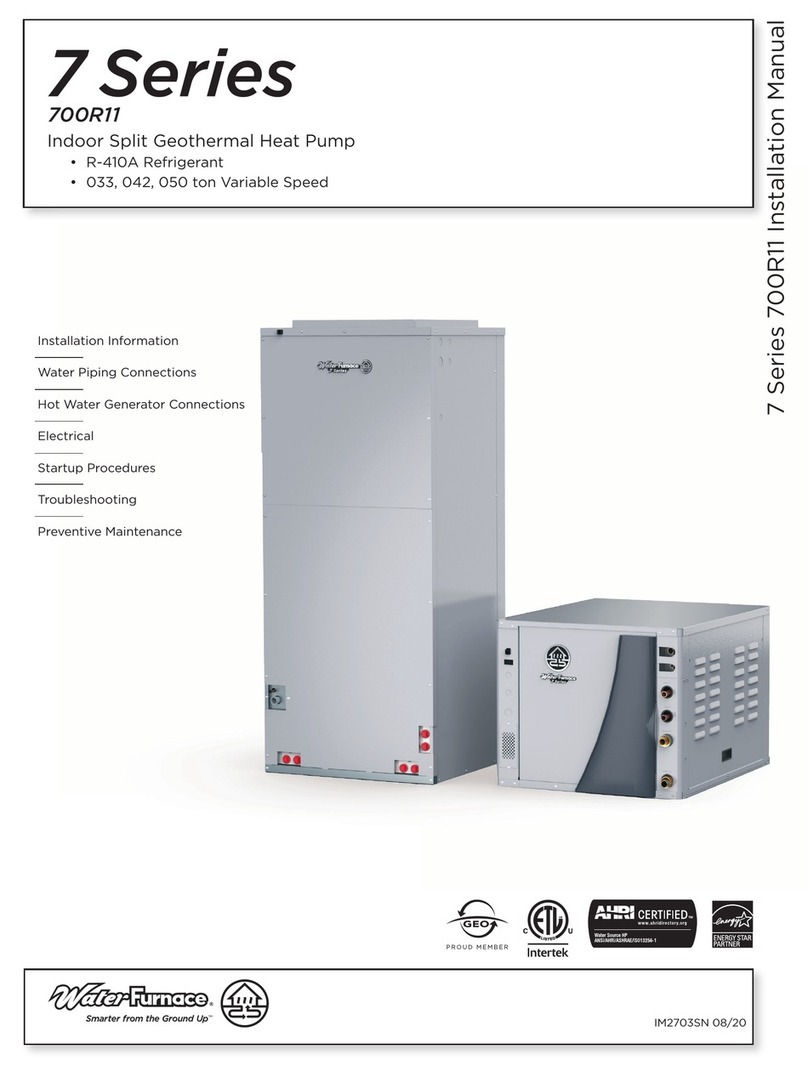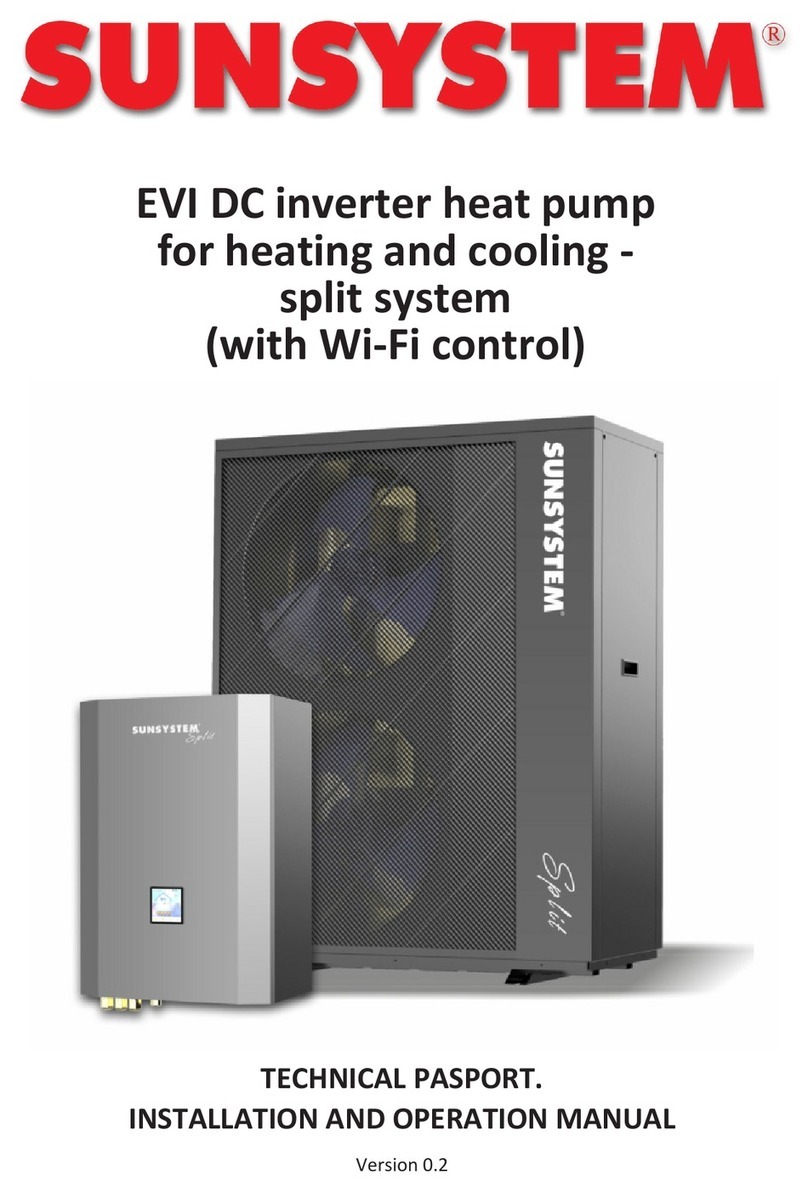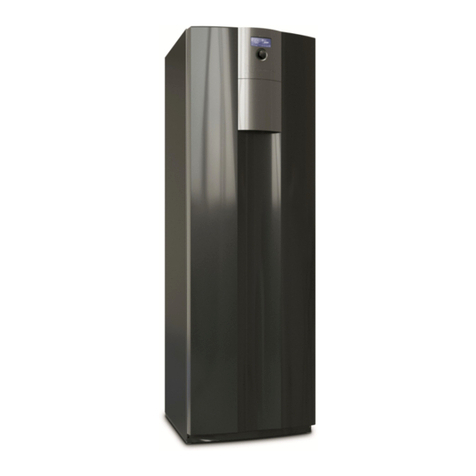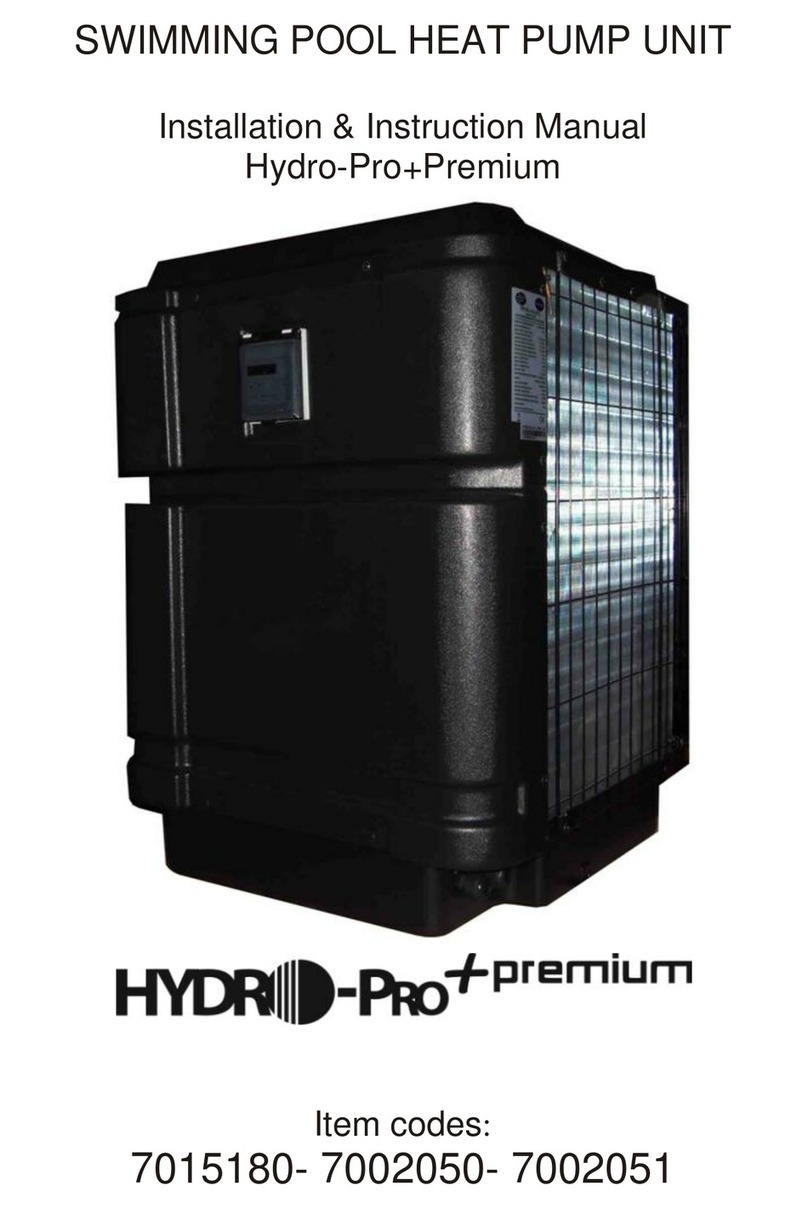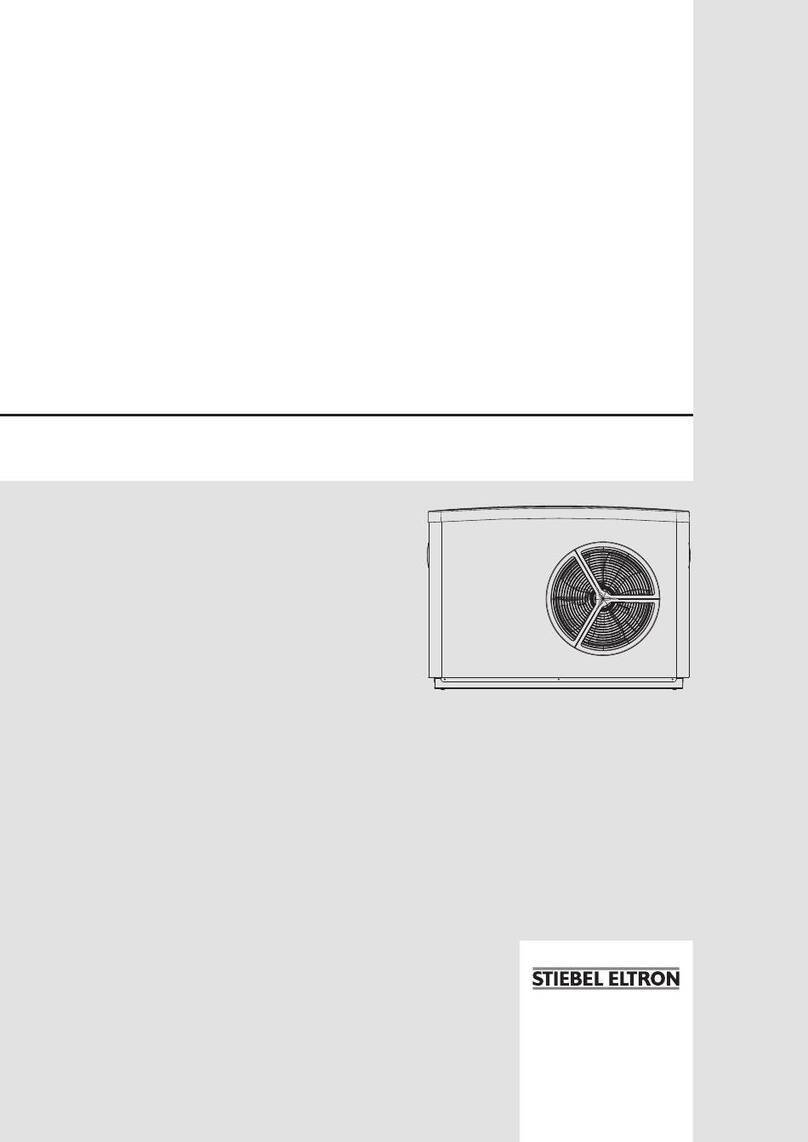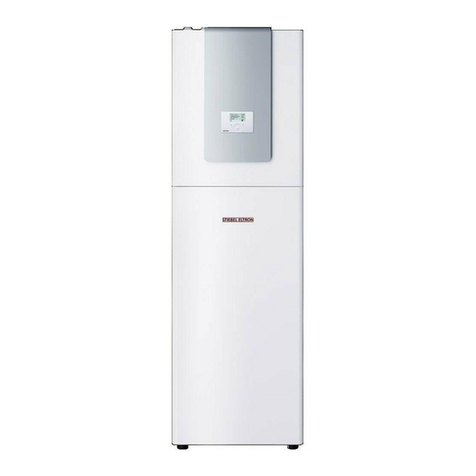
3
1 Operation and control
The WWK 300 domestic hot water (DHW) heat
pump from STIEBEL ELTRON is an automatic
DHW heater offering a capacity of approx. 300
l. The required DHW temperature can be pre-
selected.
Your local contractor will install, connect and
commission your WWK. Nevertheless, you
should familiarise yourself with the most
important aspects of this equipment.
1.1 Equipment description
The WWK 300 contains two heat sources
within the cylinder; both heat the water to the
required temperature:
– Heat pump
– Electrical supplementary heater
The WWK 300, with suffix SOL, not only
contains a heat pump and an electrical
supplementary heater, but also a heat
exchanger permanently fitted inside the
cylinder, which can be supplied with energy
from a boiler or solar heating system.
The WWK 300 extracts energy from the air
which can be utilised to heat the water
contained inside the cylinder. This energy
extraction leads to a cooling of the installation
room by approx. 1-3 °C. The WWK can also
be operated with a connection to an air duct
(for part no., see page 2). However, such air
channels must not be smaller than Ø 160 mm;
their length should not exceed a maximum of
approx. 5 m.
The WWK 300 also extracts moisture from the
air, which turns into condensate and must be
drained off. A hose connection is provided for
that purpose.
1.2 Correct operation
This DHW heat pump is designed to extract
energy from the air inside the equipment
installation room or from a room, to the
ambient air of which it is connected, via air
ducts. With that energy it heats domestic hot
water (DHW).
1.3 Incorrect operation
Never
– use greasy exhaust air
– heat liquids other than potable water
– install the equipment
a) outside
b) in rooms at risk from frost
c) in rooms at risk from dust, gases
or vapours liable to explode
– operate the equipment with an empty
cylinder
– operate the integral heat exchanger
inside the equipment cylinder with
liquids other than heating water.
1.4 Description of functions
1.4.1 Heat pump operation
This is the standard operating mode, to which
the limits of scope of the heat pump apply
(see: specification). To heat the cylinder
content of approx. 300 litres of water to 55 °C,
the WWK 300 (to EN 255 part 3) requires:
ϑ Space H rel ϑ Cold water τ Heat-up COP(t)
6 °C 70 % 15 °C 11.5 h 3.3
15 °C 70 % 15 °C 9.0 h 4.2
35 °C 47 % 15 °C 6.4 h 5.2
The water inside the cylinder will be heated to
55 °C by the electrical supplementary heater,
which is controlled by the programmable
time switch, subject to the heating period
being long enough. This enables the option
of making greater mixing water volumes
available at certain times. At all other times,
the water will be heated to the temperature
selected on the controller (see page 4, Fig. 1,
item 3).
If the heat pump was manually swit-
ched OFF and ON again after a power
failure, the compressor will only
re-start (after approx. 15 minutes) when the
pressure inside the refrigerant circuit has
normalised again.
1.4.2 Electrical supplementary heater
You can accelerate the heating-up process
with the electrical supplementary heater, if the
DHW demand increases or if the WWK 300 has
previously been switched OFF and you require
hot water as quickly as possible. For reasons
of saving energy, the electrical supplementary
heater only heats the top third of the cylinder
capacity (approx. 100 litres). This takes approx.
2 hours.
In SOL versions, approx. 50 litres are heated
up due to the flange being positioned higher
up on the cylinder.
The electrical supplementary heater is
switched ON when the actual temperature falls
below 58 °C and is switched OFF when 65 °C
are exceeded.
Press the push button only once if you want to
activate the electrical supplementary heater
only to cover a peak demand.
1.4.3 Boiler operation via heat exchanger
(only for SOL version)
A heat exchanger, which is generally
connected to a central heating system, is
integrated into the cylinder. Subject to the
heating water flow temperature, the entire
cylinder capacity should be heated up by the
heat exchanger in between 3 and 4 hours.
Never exceed the maximum inlet tem-
perature of 65 °C into the heat pump
heat exchanger.
1.5 Operation outside the limits of use below
6 °C to 4 °C
Subject to the relative humidity and the
DHW temperature inside the cylinder, the
evaporator begins to ice up below a room
temperature of 6 °C. When the evaporator
is covered in hoarfrost, the frost stat N2 (see
wiring diagram) shuts down the compressor,
whilst the fan continues to operate, thereby
defrosting the compressor. The compressor
starts again automatically after the defrosting
process has been completed, and the heat
pump operation continues.
The minimum temperature required for the
heat pump operation is +4 °C. The evaporator
is defrosted upon demand at operating
temperatures between +4 and
+6 °C. This increases the heat-up time.
Room temperature higher than 35 °C
The heat pump will be switched OFF by safety
equipment at room temperatures above
approx. 35 °C. The heat pump will be re-
started automatically after a brief cooling
down period. The heat pump will be switched
OFF again if the room temperature is still
higher than 35 °C.
Take appropriate steps to prevent
the ambient temperature rising
above 35 °C.
1.6 Maintenance and cleaning
The WWK 300 is largely maintenance free.
Maintenance must only be carried out by
qualified contractors.
Have the protective anode checked regularly.
Your contractor, who will be familiar with
your local water quality, will advise you of the
optimum timing for such maintenance. The
first inspection of the protective anode is due
after two years.
Operating instructions for users and contractors












